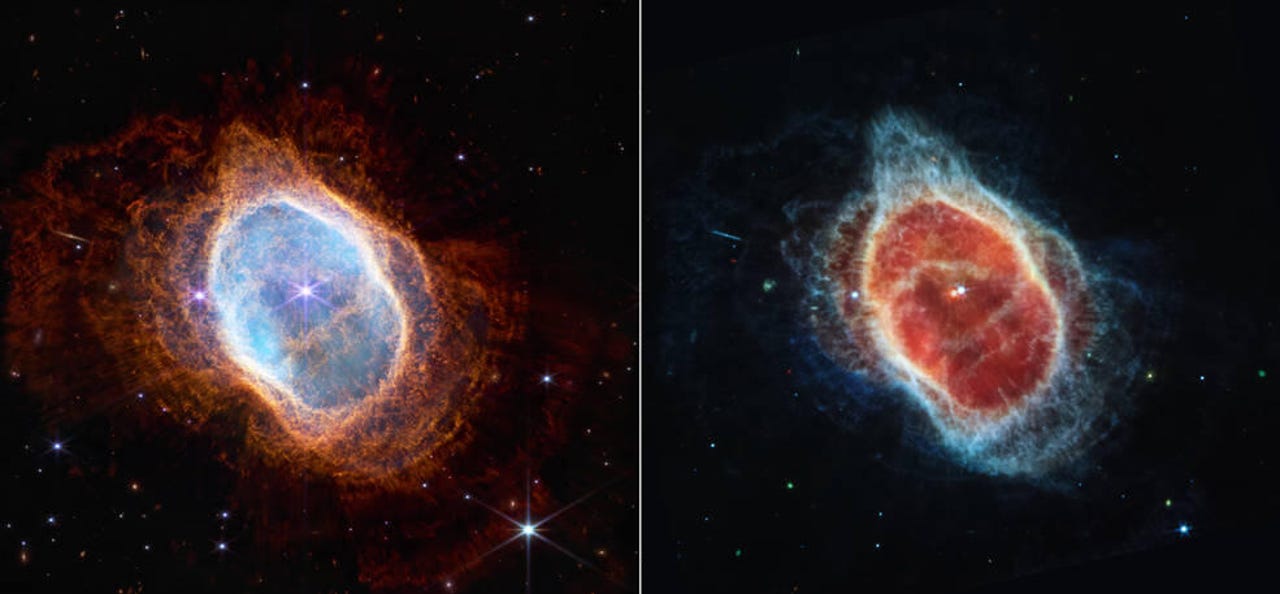
































In these images of the Southern Ring planetary nebula, the Webb telescope shows a dying star cloaked by dust and layers of light.
Source: NASA, ESA, CSA, and STScIThe formation and death of stars, an exoplanet light years away from Earth and galaxy clusters that exist farther than humans have ever looked before -- these are some of the sights that humanity laid eyes on for the first time on Tuesday, as NASA unveiled new images from the James Webb Space Telescope.
Among the images revealed was the spectrum of an exoplanet, the giant gas planet WASP 96-b, which orbits a star 1,150 light-years away. The Webb telescope captured the distinct signature of water vapor in the exoplanet's atmosphere, as well as evidence of clouds and haze.
"Every image is a new discovery, and each will give humanity a view of the universe that we've never seen before," NASA administrator Bill Nelson said on Tuesday ahead of the reveal, speaking from NASA's Goddard Space Flight Center in Greenbelt, Maryland.
NASA's James Webb Space Telescope has captured the distinct signature of water, along with evidence for clouds and haze, in the atmosphere surrounding a hot, puffy gas giant planet orbiting a distant Sun-like star.
Source: NASA, ESA, CSA, and STScIThe image of WASP 96-b is an indirect image -- an observation of the planet in transit. As the planet passes in front of a star, starlight filters through atmosphere. That can be broken down into wavelengths of light, which reveal information about the contents of the atmosphere. This is how scientists observed the telltale signature of water vapor, along with evidence for clouds and haze.
This isn't the first time scientists have detected water in an exoplanet's atmosphere -- the Hubble Space Telescope did so in 2013. However, Webb's immediate and more detailed observation significantly advances our understanding of potentially habitable planets beyond Earth.
SEE: NASA's tiny satellite is exploring a new Moon orbit
WASP-96 b is one of the more than 5,000 planets scientists have found beyond our solar system. The planet is about the size of Jupiter and half the mass. It's extremely hot, with a temperature greater than 1000
 Hot Tags :
Innovation
Space
Hot Tags :
Innovation
Space